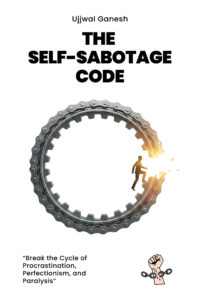Your website is a skyscraper. You’ve invested in a stunning design for the lobby and compelling copy for the penthouse suite. But you’ve built it all on a foundation of sand. This is precisely what happens when you fall into the “bargain basement” trap of cheap web hosting.
Choosing a hosting provider is the single most important foundational decision you will make for your online presence, yet it’s the one most often treated as a line-item expense to be minimized. This is a catastrophic error in judgment. An unreliable host doesn’t just make your site slow; it makes your entire digital business fragile.
The data on the cost of downtime is brutal. Recent studies estimate that even for small businesses, the average cost of just one hour of IT downtime can exceed $2,500. As a website strategist who builds profit-generating platforms, I can tell you that your web host is not an expense—it is the core investment that determines your speed, security, and ability to grow.
The High Cost of a “Bargain”: The Performance, Security & Scalability Traps
That “deal” on $2/month hosting comes with a cascade of hidden costs that will ultimately cripple your business.
- The Performance Drain: Cheap shared hosting plans cram your website onto a server with hundreds, sometimes thousands, of other sites—the “noisy neighbor” effect . When another site on your server gets a traffic spike, it hogs the resources, and your site slows to a crawl. Given that 53% of mobile users abandon a site that takes longer than three seconds to load, this isn’t just an annoyance; it’s a direct hit to your revenue.
- The Security Blind Spot: Budget hosts cut corners on security. They often run outdated server software and lack robust firewalls or malware scanning . This is critical because 43% of all cyberattacks are aimed at small businesses, often through shared hosting vulnerabilities. A single insecure site on your server can become a gateway for hackers to access every other site, including yours.
- The Scalability Trap: Your business is built for growth, but your cheap hosting plan is not. The moment you get a big press mention or a marketing campaign goes viral, the traffic surge will overwhelm your server’s limited resources. Your site will crash, squandering the opportunity and damaging your reputation at the peak of your visibility .
The Blueprint for a Rock-Solid Foundation: Choosing the Right Hosting
You don’t need to be a systems architect to make a smart choice. When evaluating a host, ignore the marketing hype and focus on these four critical pillars.
- Technology & Speed:
- NVMe Storage: Don’t just look for “SSD.” The new gold standard is NVMe SSD, which can be up to 6x faster than traditional SSDs. This is a key differentiator for modern hosts.
- Server Location & CDN: The physical distance data travels matters. Choose a host with servers located close to your primary audience. A built-in Content Delivery Network (CDN) is also essential, as it stores copies of your site globally to ensure fast delivery for all visitors.
- Uptime & Reliability:
- Look for a host that offers a 99.9% uptime guarantee. Anything less is unacceptable. This guarantee is a measure of their confidence in their own infrastructure. Every minute of downtime is lost revenue.
- Security as Standard:
- Security is not a premium add-on. A quality host must provide a free SSL certificate (for HTTPS), a Web Application Firewall (WAF), DDoS protection, and regular malware scanning as part of their standard package.
- A Clear Growth Path (Scalability):
- Understand the different types of hosting as steps on a ladder. You might start on high-quality Shared Hosting, but a good provider will offer an easy, seamless path to upgrade to VPS or Cloud Hosting as your traffic grows, without requiring a complex migration .
The Future: AI-Managed, Predictive Hosting
The hosting landscape is evolving rapidly. The best hosting providers are now integrating AI to manage their infrastructure. This includes AI-powered auto-scaling, which automatically allocates more server resources to your site during a sudden traffic spike, and predictive maintenance, where AI monitors server health and can anticipate hardware failures before they happen . This is the new frontier of reliability.
Your Host Is Your Foundation, Not an Expense
The case of RetailGiant.net is a stark reminder: its traffic plummeted by 60% after an algorithm update, with its abysmal 5-second load times—a direct symptom of poor hosting infrastructure—being a primary cause .
Choosing your web host is one of the most consequential decisions for your digital business. It’s not a place to cut corners. It is the foundational investment that dictates your speed, secures your data, and determines your capacity for growth. Building on anything less than a rock-solid foundation is simply choosing to fail.













